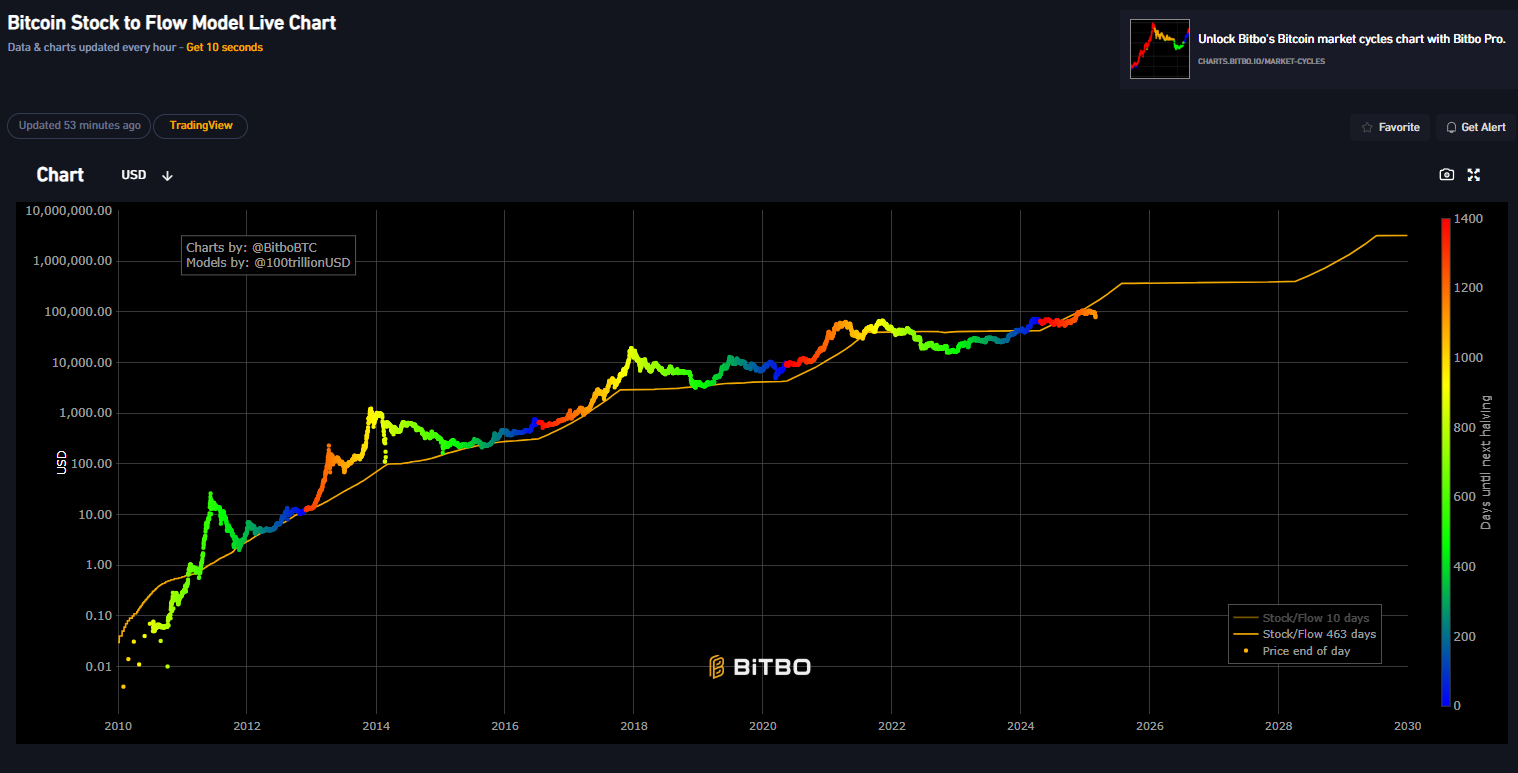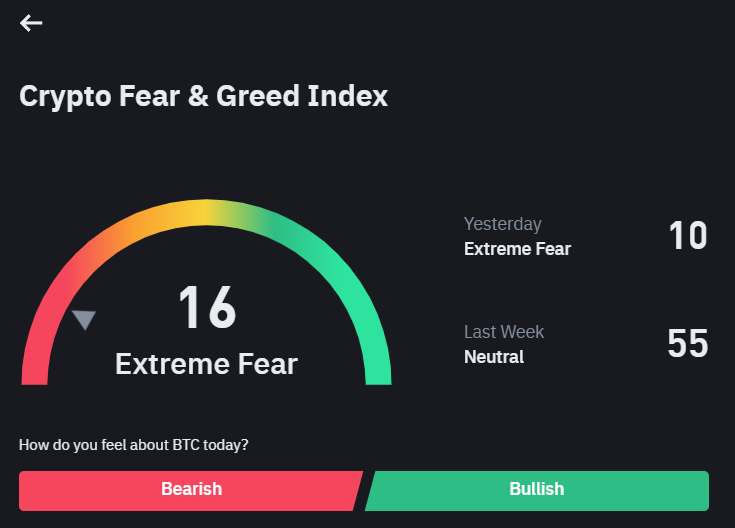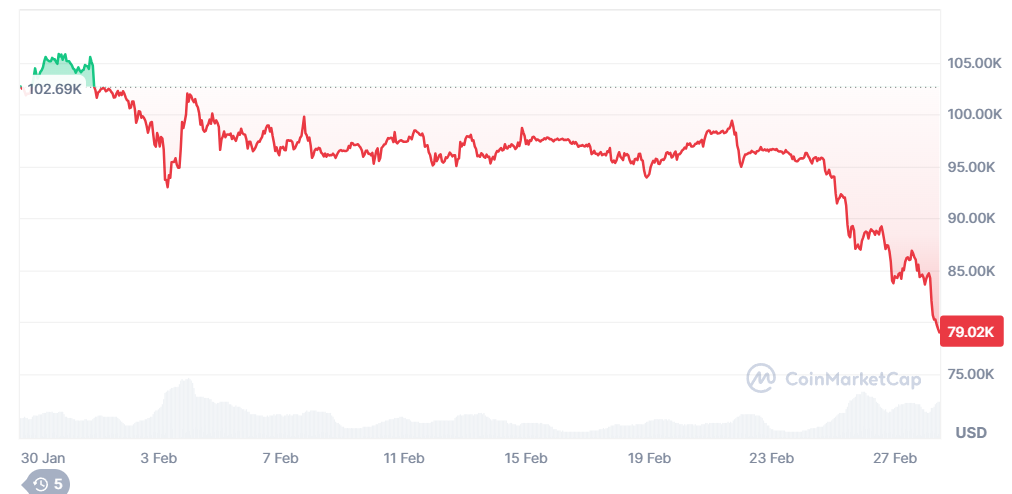
Bitcoin Price Prediction 2025: What to Expect in the Coming Market Cycle
Bitcoin, the pioneering cryptocurrency that revolutionized financial systems worldwide, continues to captivate investors, technologists, and financial analysts alike. As we navigate through early 2025, understanding Bitcoin’s potential price trajectory has become increasingly important for investors seeking to optimize their portfolios and newcomers looking to enter the cryptocurrency market. This analysis explores potential Bitcoin price scenarios for 2025, considering historical patterns, market fundamentals, and emerging trends that could influence its value.
The relevance of this topic cannot be overstated as cryptocurrencies increasingly integrate with traditional financial systems. With institutional adoption accelerating and regulatory frameworks maturing, Bitcoin’s position as a digital store of value continues to strengthen, making price predictions a crucial tool for investment planning.
Historical Price Patterns and Cyclical Analysis
Bitcoin has historically moved in roughly four-year cycles, primarily influenced by the “halving” events that reduce the rate at which new bitcoins are created. Following the most recent halving in April 2024, historical patterns suggest that we are potentially entering a new bullish phase that could peak in 2025.
Looking at previous cycles:
- following the 2012 halving, Bitcoin reached approximately $1,000 in 2013;
- after the 2016 halving, Bitcoin peaked at nearly $20,000 in December 2017;
- post-2020 halving, Bitcoin reached an all-time high of about $69,000 in November 2021.
These patterns suggest that Bitcoin tends to experience significant price appreciation 12-18 months after each halving event. If this pattern holds, late 2025 could potentially see Bitcoin reaching new all-time highs.
Technical Analysis and Price Projections
Technical analysts employ various models to predict Bitcoin’s future price. Among these, the Stock-to-Flow (S2F) model has gained prominence for its historical accuracy in predicting long-term price trends based on Bitcoin’s scarcity.
Post-2024 halving, the S2F model projects potential prices ranging from $100,000 to $250,000 by late 2025. However, it’s important to note that this model has faced criticism for potentially overestimating future prices and not accounting for demand-side dynamics.

Other technical indicators worth considering include:
- long-term moving averages that suggest strong support levels have been established;
- logarithmic regression bands indicating Bitcoin may be entering a sustainable growth phase;
- on-chain metrics showing increasing accumulation by long-term holders.
While these technical projections offer valuable insights, they should be complemented with fundamental analysis for a more comprehensive understanding.
Fundamental Factors Influencing Bitcoin’s 2025 Price
Several fundamental factors will likely influence Bitcoin’s price trajectory through 2025:
Institutional Adoption
The continued entry of institutional investors into the Bitcoin market represents a significant driver for potential price appreciation. Major financial institutions have established dedicated cryptocurrency trading desks, while corporate treasuries increasingly include Bitcoin as a reserve asset. This institutional adoption trend is expected to accelerate through 2025, potentially bringing substantial capital inflows into the market.
Regulatory Developments
The regulatory landscape for cryptocurrencies continues to evolve globally. Clearer regulatory frameworks in major economies could reduce uncertainty and encourage broader adoption. However, regulatory challenges or restrictions in key markets could also create headwinds for price growth. The balance of these regulatory forces will play a crucial role in determining Bitcoin’s 2025 price trajectory.
Macroeconomic Factors
Bitcoin’s correlation with broader macroeconomic conditions has become increasingly relevant:
- inflation concerns have strengthened Bitcoin’s narrative as a hedge against currency devaluation;
- interest rate policies affect liquidity conditions and investment flows into risk assets;
- global economic stability influences risk appetite for alternative investments like Bitcoin.
As economies navigate post-pandemic recovery and potential recessionary pressures, Bitcoin’s perceived role as a store of value could significantly impact its price performance.
Technological Developments
Ongoing improvements to Bitcoin’s infrastructure, particularly the Lightning Network for scaling transactions and privacy enhancements, continue to strengthen its utility. Additionally, the integration of Bitcoin with emerging Web3 ecosystems could expand its use cases beyond store of value, potentially driving additional demand.
Expert Predictions and Market Sentiment
Financial analysts and cryptocurrency experts have offered varied predictions for Bitcoin’s 2025 price:
- conservative estimates suggest a range of $80,000-$120,000, representing moderate growth;
- mid-range projections point to $150,000-$250,000, assuming continued institutional adoption;
- bullish predictions extend to $400,000-$500,000, based on mass adoption scenarios and Bitcoin capturing significant portions of the gold market and international remittance markets.
These predictions must be viewed cautiously, as they often reflect individual biases and methodological differences. Market sentiment indicators, including the Fear and Greed Index (a tool that quantifies investor emotions — ranging from fear to greed — to gauge overall market sentiment and predict potential market movements), suggest that investor psychology will continue to drive short-term volatility even as long-term trends develop.

Investment Strategies for Different Bitcoin Price Scenarios
For Conservative Investors
If you anticipate moderate Bitcoin growth in 2025:
- consider dollar-cost averaging to reduce entry price volatility;
- maintain a balanced portfolio with Bitcoin comprising no more than 5-10% of investments;
- set realistic profit-taking targets at predetermined price points;
- implement stop-loss strategies to protect against significant downside risks.
For Moderate Risk Tolerant Investors
If you align with mid-range Bitcoin price projections:
- increase allocation to 10-20% of your investment portfolio, depending on risk tolerance;
- explore Bitcoin-adjacent investments such as mining companies or crypto-focused ETFs;
- consider yield-generating strategies through lending platforms or staking services;
- develop a tiered exit strategy to capture profits at various price milestones.
For High-Risk Tolerant Investors
If you believe in bullish Bitcoin price scenarios for 2025:
- higher portfolio allocations may be justified, though diversification remains important;
- explore leveraged positions cautiously, understanding the significant risks involved;
- consider options strategies to capitalize on volatility while limiting downside exposure;
- invest in educational resources to stay informed about market developments.
Risk Management and Potential Challenges
While optimistic projections dominate discussions, prudent investors must acknowledge potential risks:
Market Volatility
Bitcoin continues to exhibit higher volatility than traditional asset classes. In 2024-2025, price swings of 20-30% within short time frames remain possible, requiring strong risk management strategies. In February 2025, the value of bitcoin fell about 23% in one month.

Regulatory Uncertainty
Despite progress, regulatory frameworks remain in flux. Restrictive policies in major economies could significantly impact Bitcoin’s accessibility and market liquidity.
Technological Risks
While Bitcoin’s core protocol has proven resilient, associated technologies like exchanges and wallets remain vulnerable to security breaches and operational failures.
Competitive Pressures
Bitcoin faces competition from other cryptocurrencies and emerging financial technologies that could potentially capture market share or undermine its value proposition.
Conclusion
Bitcoin’s price trajectory through 2025 will likely be influenced by a complex interplay of cyclical patterns, technical indicators, fundamental factors, and market sentiment. While historical patterns and halving cycles suggest potential for significant price appreciation, investors should approach predictions with appropriate caution.
The convergence of institutional adoption, technological advancement, and Bitcoin’s maturing narrative as a digital store of value creates compelling arguments for long-term value appreciation. However, short-term volatility and various risk factors necessitate thoughtful investment strategies tailored to individual risk tolerance and financial goals.
For those looking to participate in this market, education remains the most valuable investment. Understanding Bitcoin’s fundamentals, keeping abreast of regulatory developments, and maintaining a disciplined approach to position sizing and risk management will be essential regardless of which price scenario ultimately materializes in 2025.
As with any investment, particularly in emerging asset classes, the principle remains: never invest more than you can afford to lose, and approach the market with both enthusiasm and prudence.
FAQ
Will Bitcoin reach $100,000 in 2025?
Based on historical post-halving patterns and current adoption trends, Bitcoin reaching $100,000 in 2025 appears reasonable within many analysts’ projections. The 2024 halving event historically suggests price appreciation 12-18 months afterward. However, this milestone depends on continued institutional adoption, favorable regulatory developments, and broader macroeconomic stability. While technically possible, investors should prepare for significant volatility on this potential journey upward.
How might recession fears impact Bitcoin’s price in 2025?
Economic downturns traditionally affect Bitcoin in two competing ways. Initially, Bitcoin often experiences selling pressure as investors seek liquidity during market stress. However, subsequent central bank responses typically involve monetary easing, which has historically benefited Bitcoin as a perceived inflation hedge. In 2025, Bitcoin’s increasing maturity as an asset class might strengthen its “digital gold” narrative during economic uncertainty, potentially attracting capital seeking alternative stores of value — though correlation with traditional markets during stress events remains a risk factor.
What impact could ETF inflows have on Bitcoin’s 2025 price?
Bitcoin ETFs represent a significant pathway for institutional capital to enter the cryptocurrency market with reduced custody and security concerns. Sustained inflows through these vehicles could create substantial buying pressure, particularly if retirement accounts increasingly allocate portions to Bitcoin exposure. Analysis of gold ETF introduction suggests that similar investment products could eventually facilitate hundreds of billions in Bitcoin investment, creating persistent upward price pressure. However, these effects typically manifest gradually rather than immediately.
How does Bitcoin’s energy consumption affect its 2025 outlook?
Bitcoin’s energy profile remains a controversial topic that could influence its 2025 price trajectory through regulatory and ESG investment considerations. However, the industry has responded with significant shifts toward renewable energy sources, with some mining operations now utilizing over 50% sustainable energy. Carbon-neutral mining initiatives and proof-of-work efficiency improvements continue developing. While environmental concerns persist, Bitcoin’s evolving energy narrative and its economic utility will likely determine how significantly this factor influences institutional adoption and regulatory approaches.
Could another cryptocurrency replace Bitcoin and affect its 2025 value?
While numerous alternative cryptocurrencies continue emerging with various technological advantages, Bitcoin’s first-mover advantage, network effects, and established brand recognition create significant competitive moats. Bitcoin’s primary value proposition as “digital gold” benefits from its unmatched security history, limited supply mechanics, and widespread liquidity. Competing cryptocurrencies might capture specific use cases, but Bitcoin’s position as the dominant store of value in the cryptocurrency ecosystem appears secure through 2025, though technological stagnation or security vulnerabilities could potentially challenge this status.
You may also read

Sol-Incinerator: A Deep Dive into Modern Waste Incineration…
Explore our comprehensive Sol-Incinerator review on the Web3Bet Blog. Delve into the intricacies of modern…

Exploring the Top Solana Meme Coins: A Detailed Review
Discover the top Solana meme coins with our detailed review on Web3Bet. Get insights into the most popular and…


